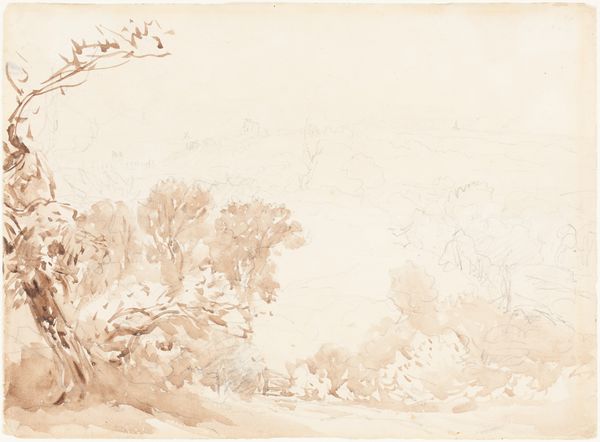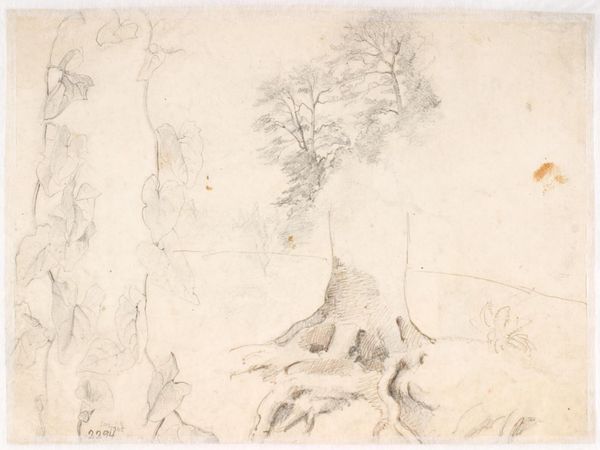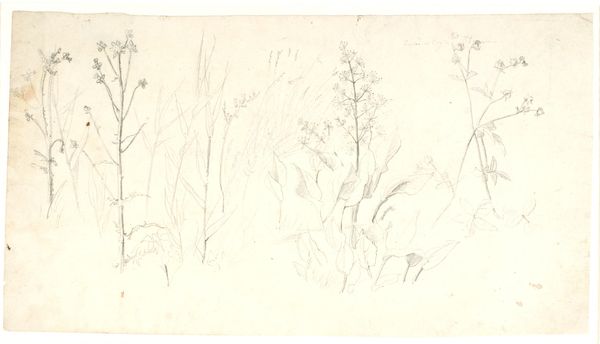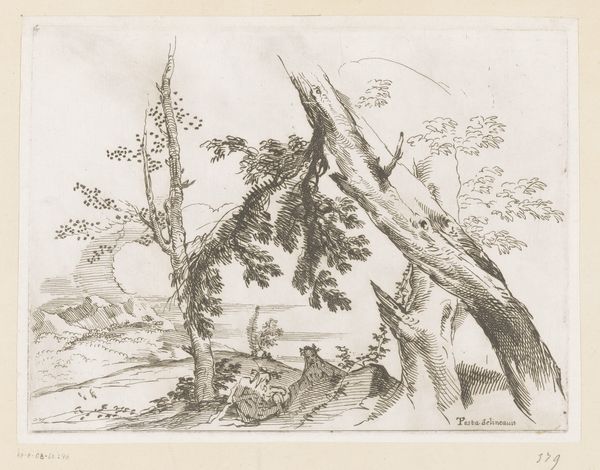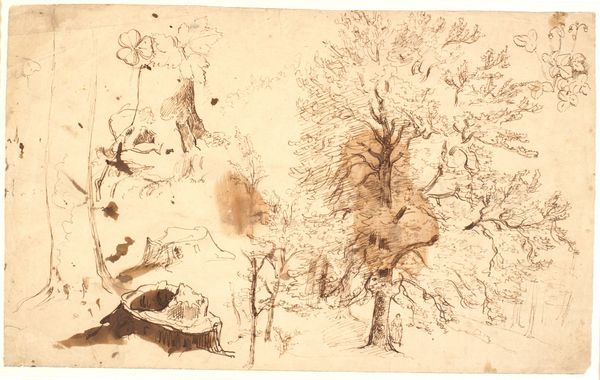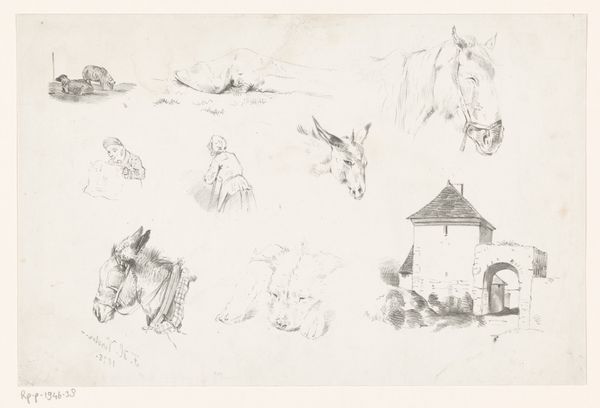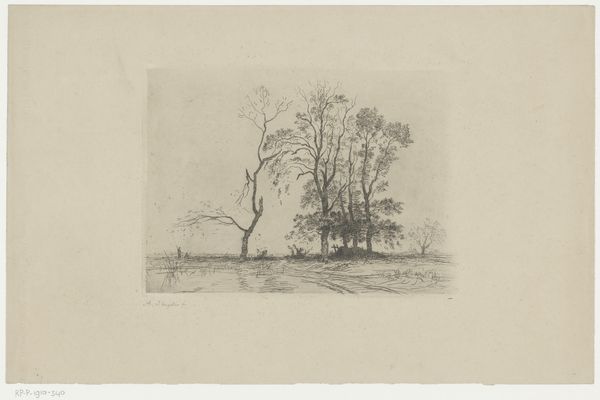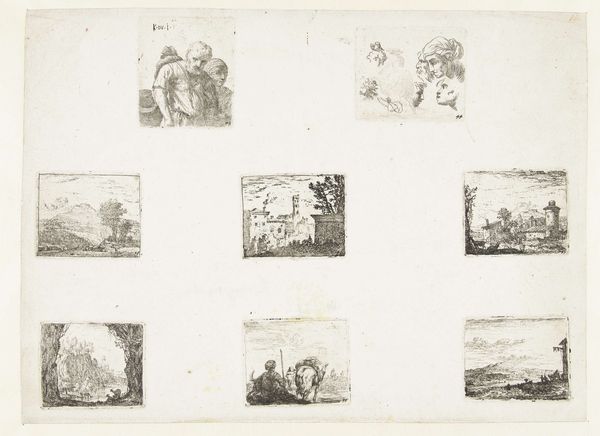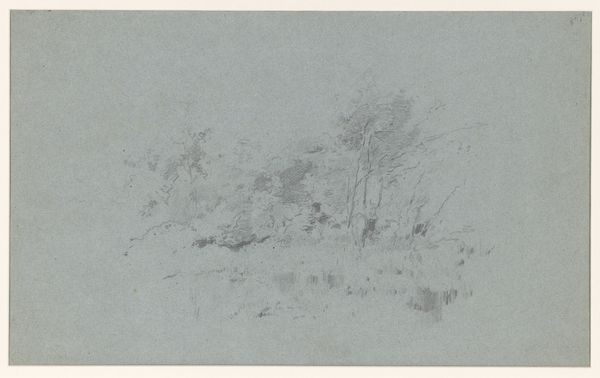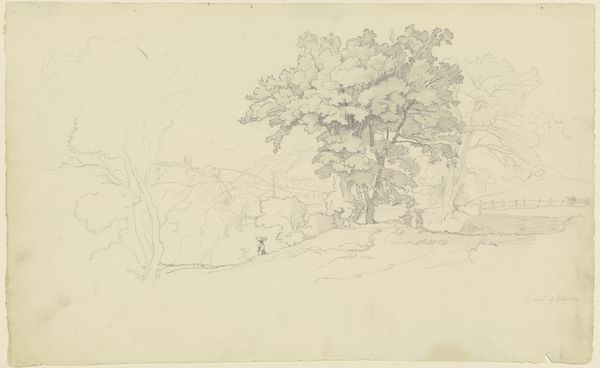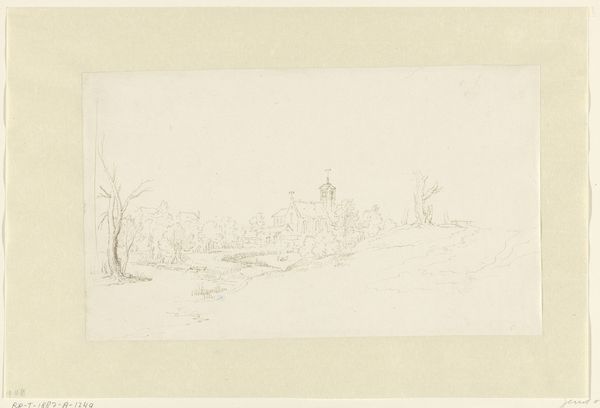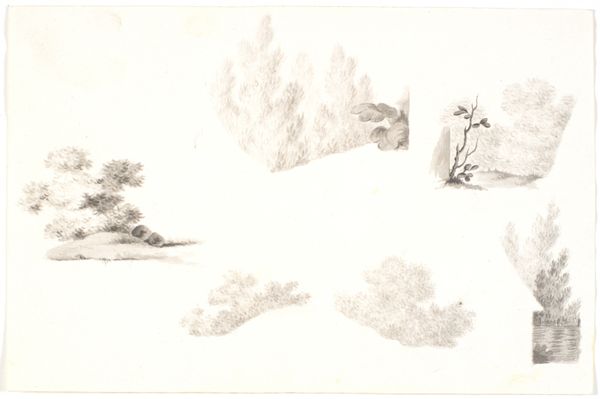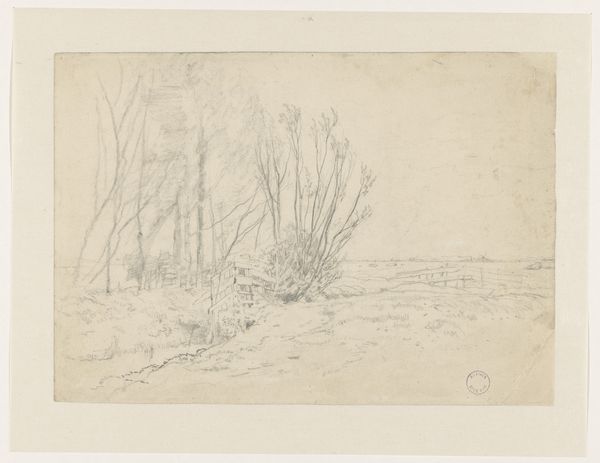
Vier voorstellingen met bomen, een huis en kasteel in twee tekenstappen 1853 - 1854
0:00
0:00
jeanbaptistelouishubert
Rijksmuseum
drawing, paper, pencil
#
drawing
#
landscape
#
paper
#
pencil
Dimensions: height 319 mm, width 490 mm
Copyright: Rijks Museum: Open Domain
Curator: Immediately striking. The arrangement of studies creates a fascinating dialogue between form and function. The texture is incredibly engaging. Editor: I agree, there's something inherently appealing in the ordered arrangement on this paper. This drawing, made circa 1853-1854 by Jean Baptiste Louis Hubert, and currently residing at the Rijksmuseum, showcases a range of subjects through several landscape studies rendered in pencil on paper. What captivates you the most about the compositional aspects? Curator: The progression! From seemingly simple trees to fortified structures. Note how Hubert incrementally introduces line, value and space into each sketch. The contrast emphasizes the different intrinsic characters—from naturalistic to cultural. It seems to be structured through binary oppositions—nature vs man, open versus closed, vulnerable and secured. Editor: Interesting, and thinking in broader terms of 19th-century European anxieties about rising social problems amidst urban-industrial growth and concurrent nationalist conflicts—are we to see such drawing studies of “trees” and “houses” as safe representations of ‘nature’ or nostalgic symbols of local cultural identity formation? How might a rapid succession of such images contribute to such understandings of “nation”? Curator: That's certainly a potential historical reading. But I'm also drawn to the surface of the paper. These studies, almost pedagogical in their neatness, become a self-reflexive index of artmaking. Notice how the medium enhances this quality – graphite leaving delicate yet reproducible marks across the fibres, emphasizing each distinct mark on this journey of the learning eye. Editor: A good point. Given that they're presented as stages in an art lesson, how much freedom for personal expressive interpretation was encouraged, if at all? If this pedagogical method was widely enforced or not is critical for knowing who benefitted. Curator: Regardless, these landscape depictions give a feeling of accessibility because of this quality of art reduced to its essential elements. Its composition welcomes the gaze through balanced asymmetries and contrast. The tonal value creates the optical play which draws attention—it isn't aiming to portray any sort of ideology, merely providing simple observations, methodically progressing through nature's order and built landscapes as it moves through different spaces—from open wilderness scenes of a few shrubs to carefully plotted and defensive architectural fortifications that cut deep scars into nearby surrounding natural environment like stone-laced mountains or cliff-edges overlooking deep gorges and waterways... It provides for the beginning observer some key observations! Editor: Precisely, which may prove to be his pedagogical contribution that can, in fact, shape viewers who eventually take leadership roles that dictate land formations for both social benefit OR social exploitation. So, it appears there's always an "edge" in education worth reflecting on and fighting for.
Comments
No comments
Be the first to comment and join the conversation on the ultimate creative platform.

